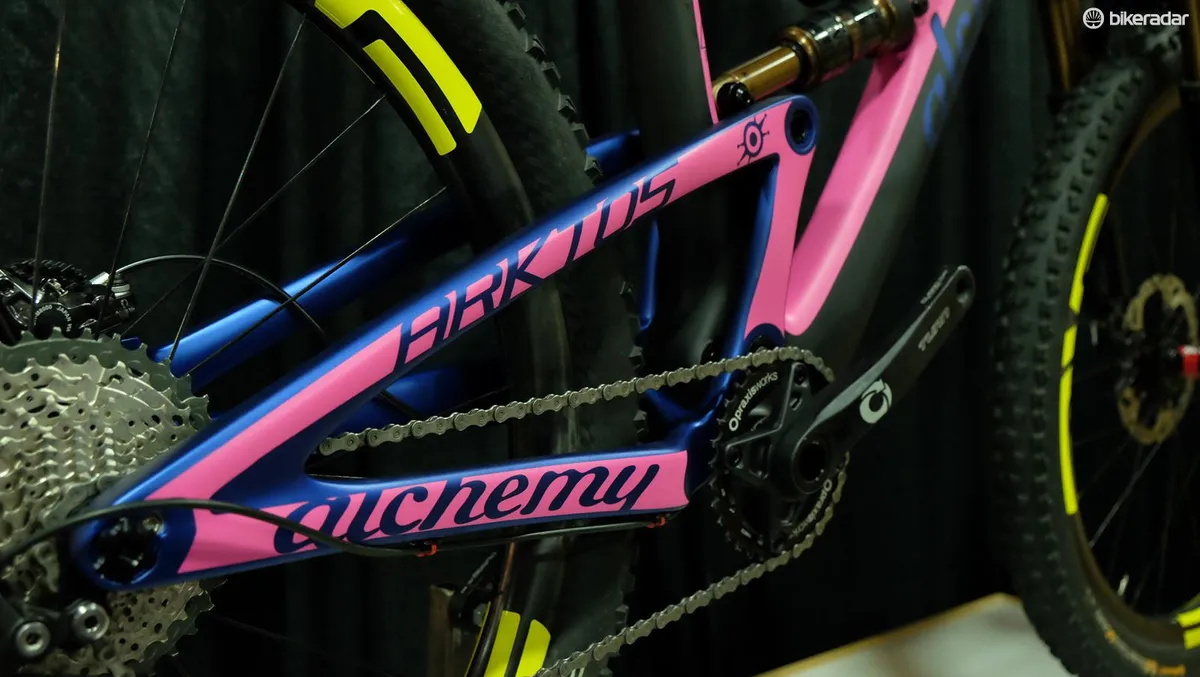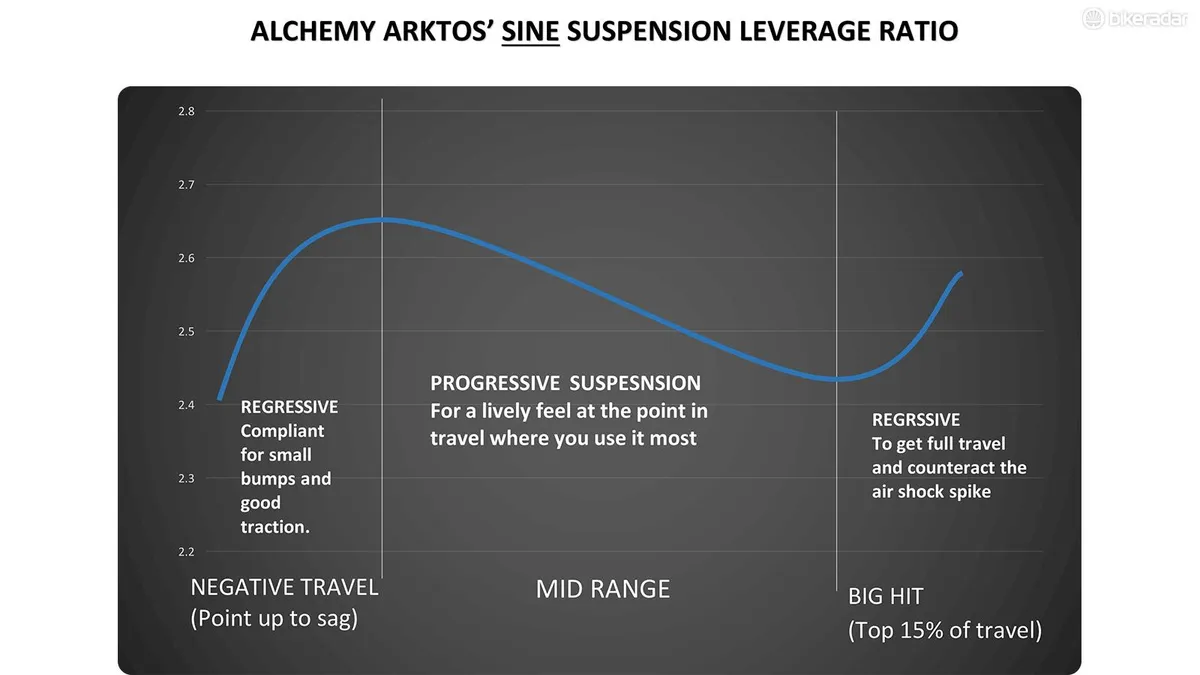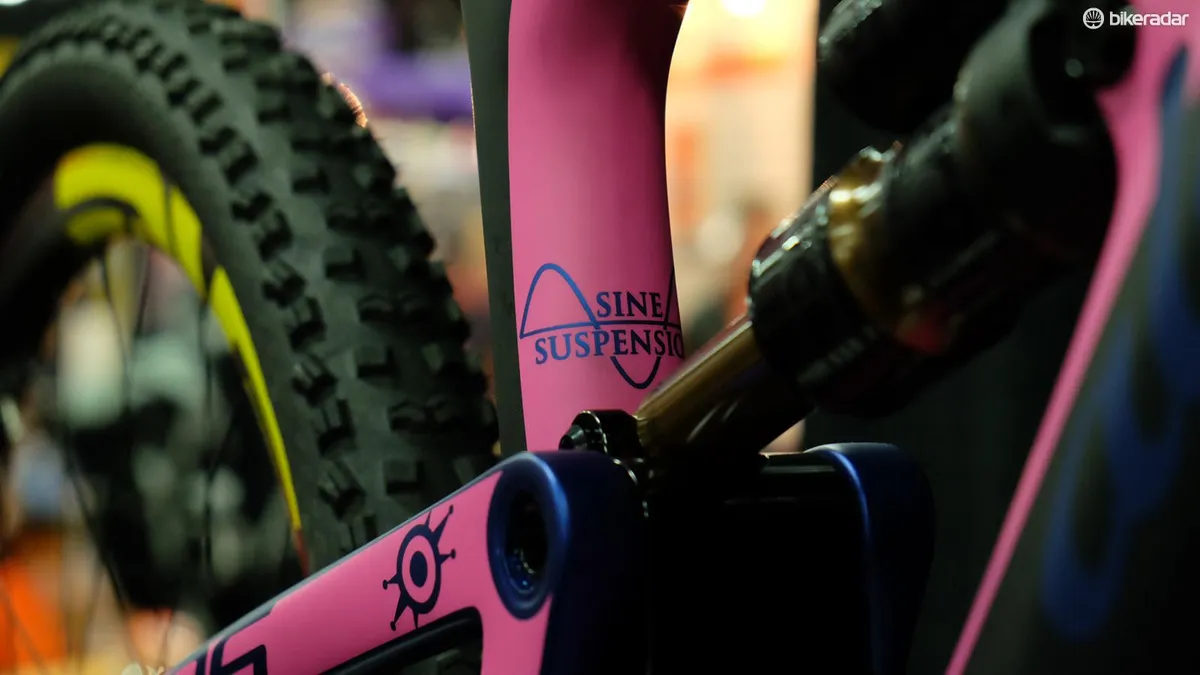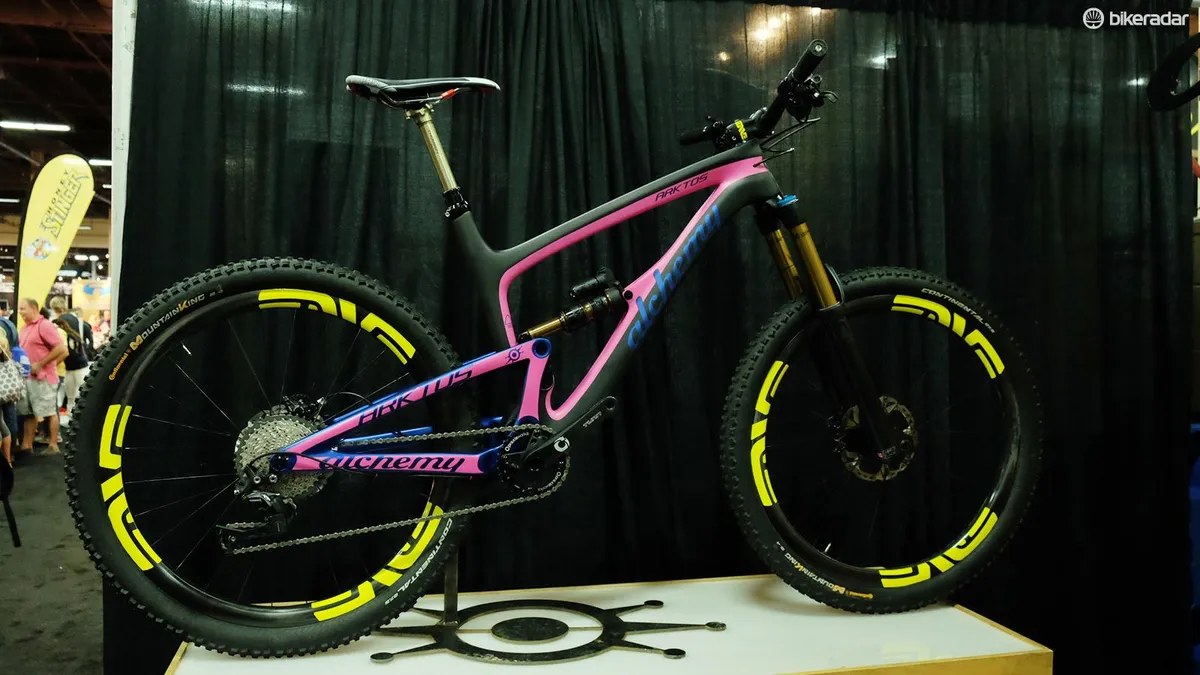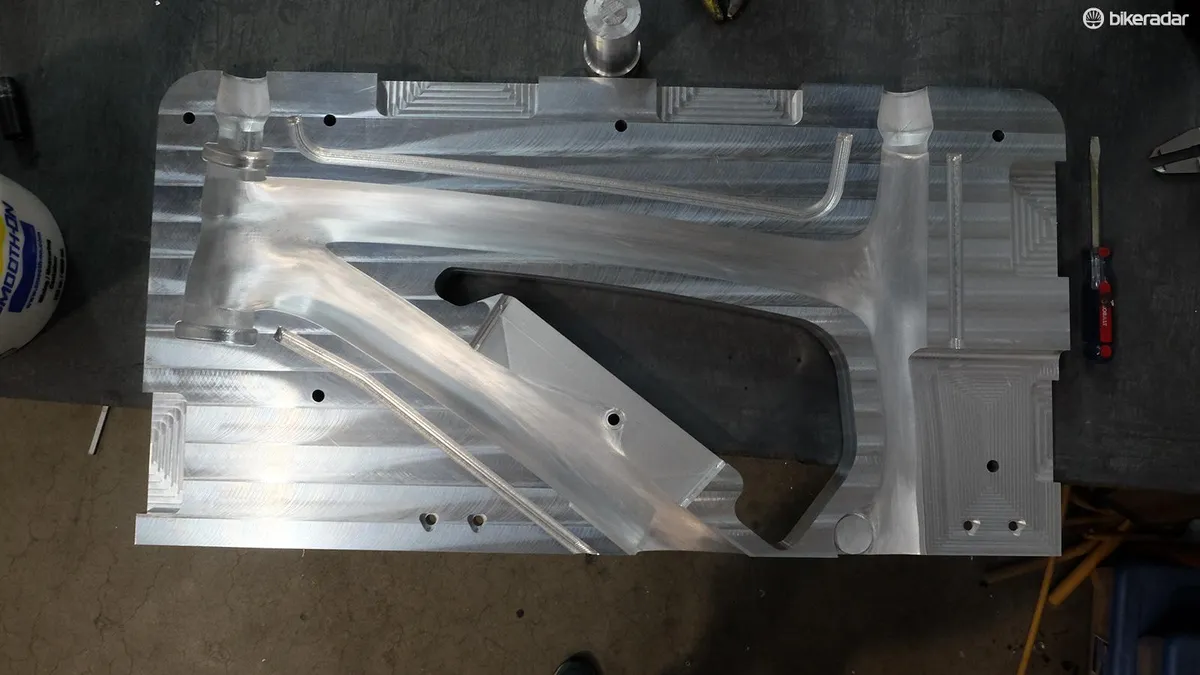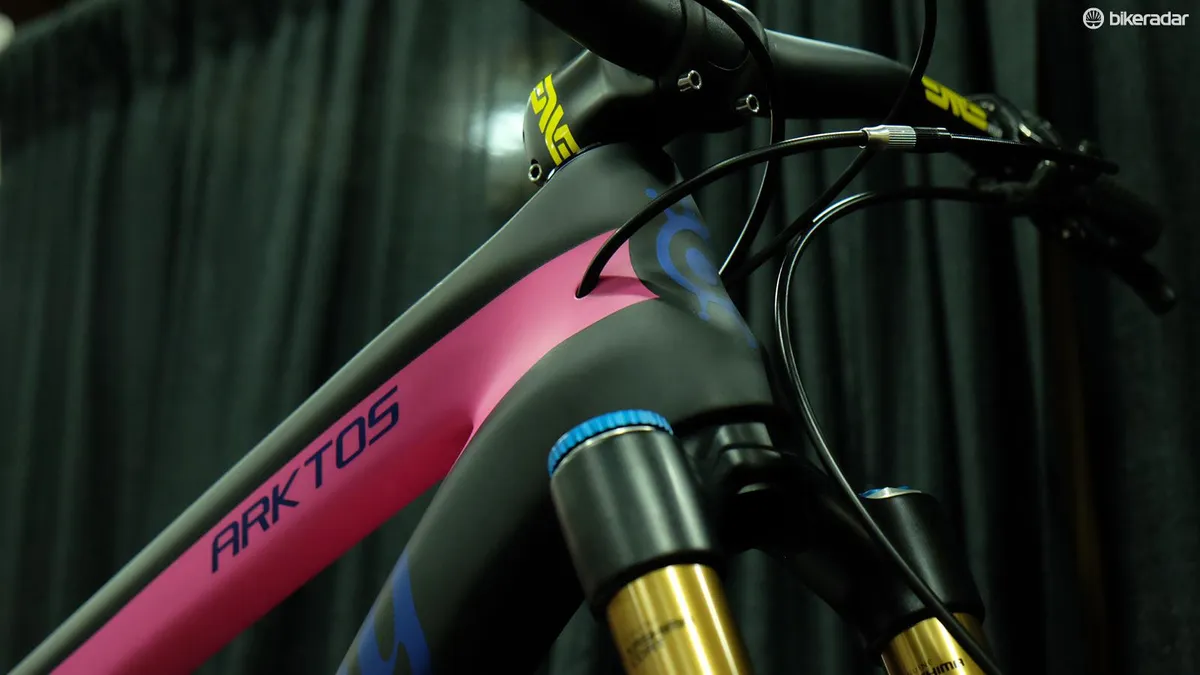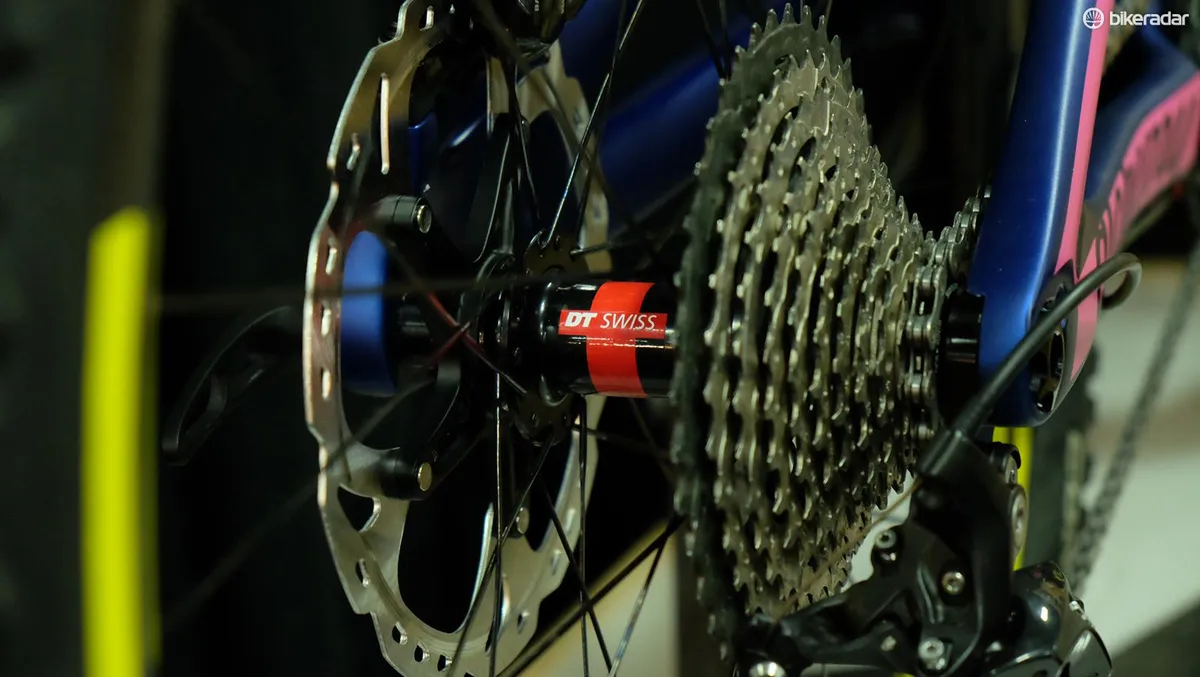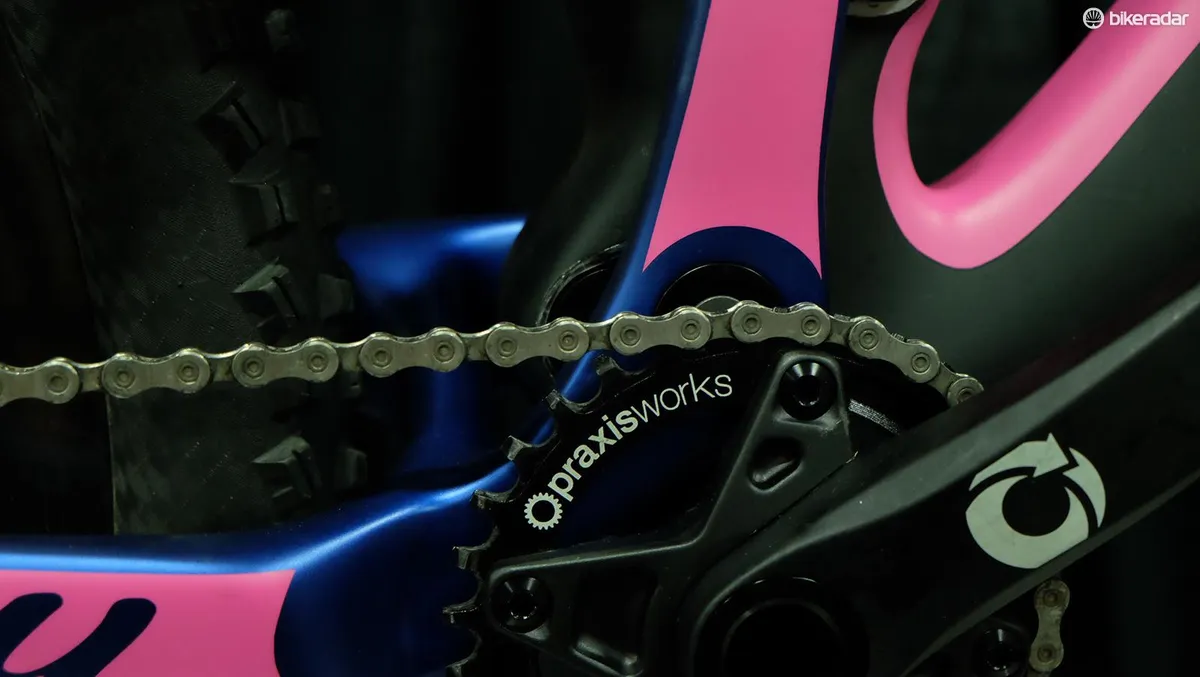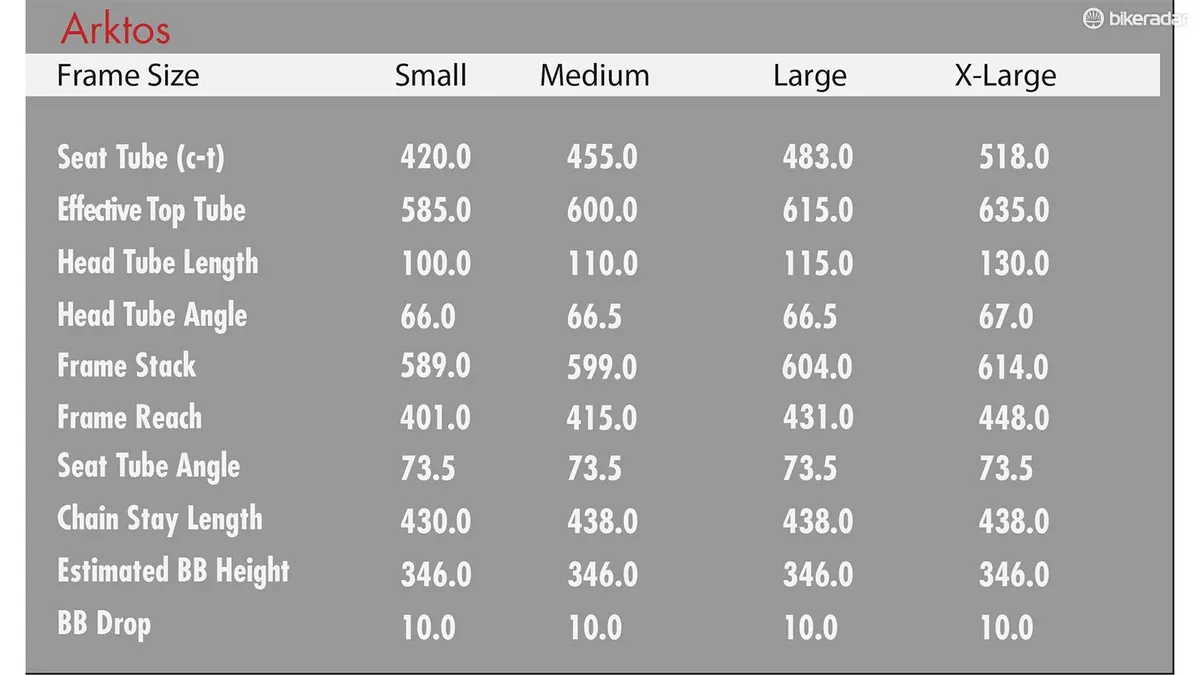Alchemy Bicycle Company is best known for its boutique custom road bikes crafted from carbon, titanium and steel. The Denver-based frame building company is breaking this tradition by introducing the Arktos, a carbon full suspension mountain bike that is partially constructed in the United States.
Related: BikeRadar’s complete Interbike coverage
Highlights
- 150mm rear travel
- Full carbon frame
- Suspension based on the Switch system first used by Yeti
- 148x12mm rear thru axle
- Internal cable routing
- 73mm threaded bottom bracket
- Custom paint options available
- MSRP will be $3,750
- Available in spring of 2016
Design details

While the new bike doesn’t have customizable geometry, Alchemy used its expertise in carbon construction to bring a portion of the construction of the Arktos in house. The front triangles will me made in the US while the rear ends will be fabricated in Asia.In addition to building the front ends, Alchemy plans to offer a wide range of custom paint options for the new trail bike.
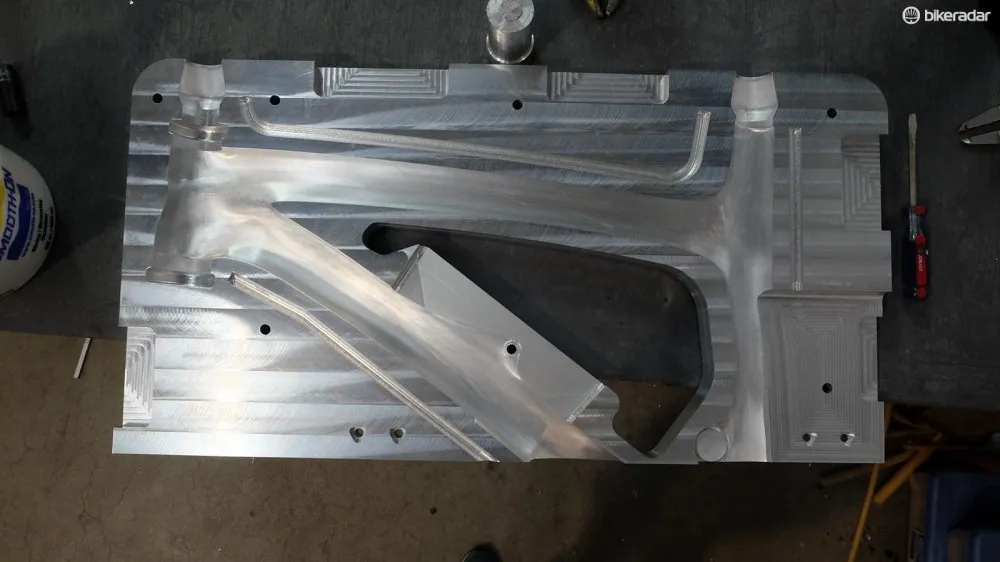
The front of the Arktos will be built in the USA
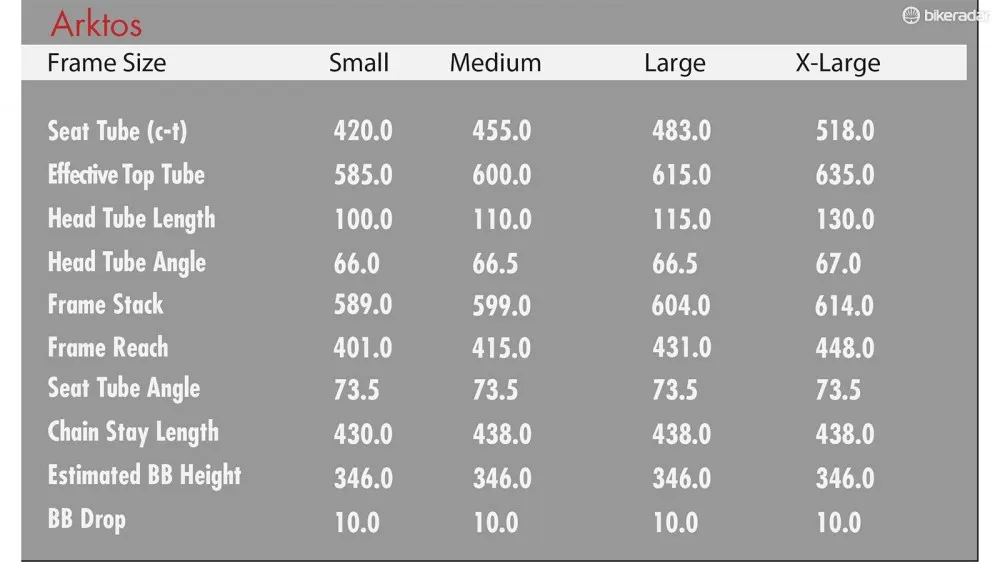
The Arktos has modern frame features such as a 148x12mm thru axle and internal cable routing, but the company has wisely stuck with a tried and true 73mm threaded bottom bracket shell.
The frame is 1x specific and, somewhat curiously for a 150mm trail bike, it lacks ISCG-05 tabs for a chainguide. While we’re on the topic of suspension, the Arktos gets its 150mm of travel from a second-generation of the Switch suspension system first adopted by Yeti.
Switched on
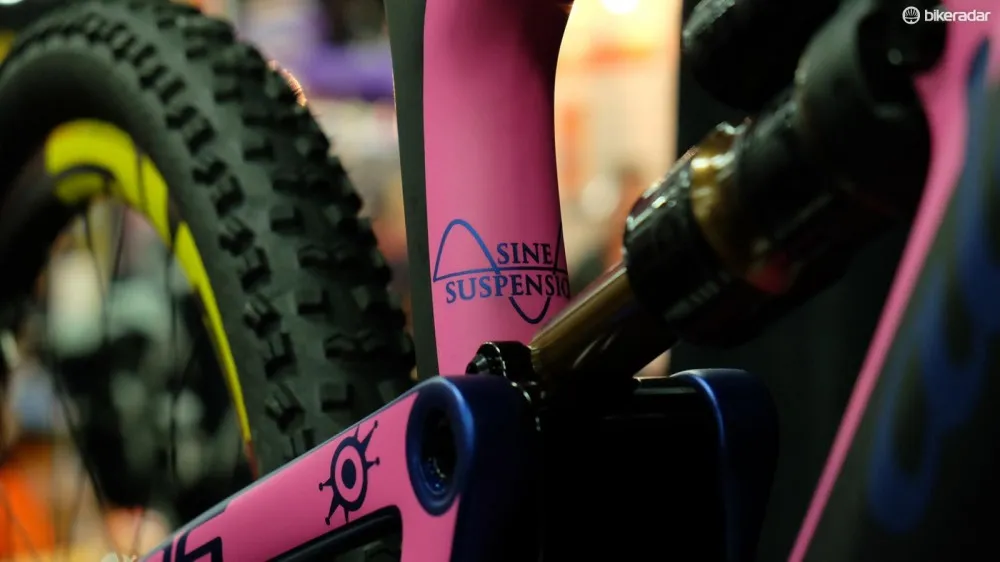
Alchemy worked with suspension designer Dave Earle to develop a suspension platform for the Arktos. Earle is the head of the Sotto Group, an engineering and design company best known for developing the Switch system used on Yeti’s highly-praised SB66 and SB95 trail bikes.
Yeti transitioned away from the original Switch system and its eccentric main pivot to its own Switch Infinity design used on the SB6c, SB5c and the new SB4.5c because the design infringed upon the VPP patent held by Santa Cruz Bicycles.
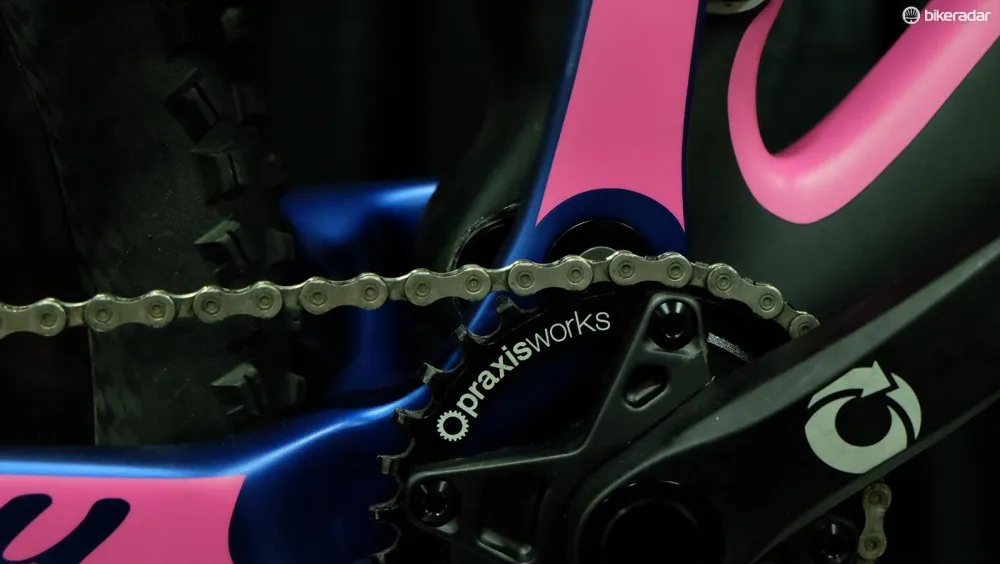
The main pivot is tucked behind the massive swingarm
The issue was that at a certain point in its travel, the Switch system’s main pivot changes direction and becomes a counter-rotating link similar to VPP, thus getting itself into murky legal waters. The VPP patent expired earlier this year and so Earle was free and clear to begin working with new partners to advance his design.
Unlike the Switch system system, this new iteration known as Sine Suspension does away with the eccentric main pivot in favor of a more traditional mini linkage tucked behind the swingarm. Functionally, the system is very similar: the initial stroke has a falling rate for improved traction that ramps up through the midstroke for pedaling performance before falling once again through the last 15 percent of the stroke to balance out the natural ramp-up of the air spring.
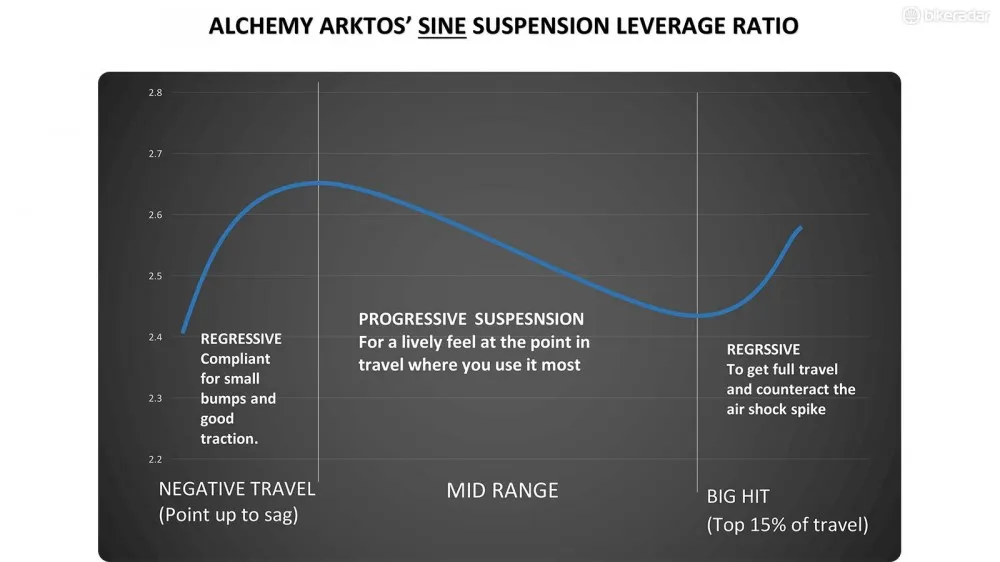
Pricing and availability
The Arktos will retail for $3,750 for the frame (international pricing TBC) with a Fox Float X rear shock when it becomes available in early 2016.
